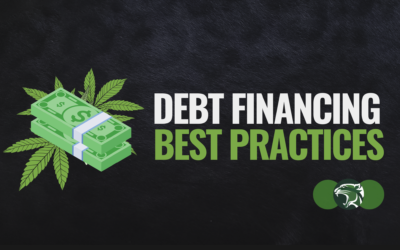Getting the obvious out of the way first, yes, brands certainly do matter. That is particularly true in the emerging cannabis space.
During a recent Panther Group webinar, Chris Burggraeve, author of “Marketing is Finance is Business” and “Marketing is Not a Black Hole,” explored the question in depth. He combines his deep global Consumer Packaged Goods (CPG) experience with his last 10 years in cannabis.
“The real question is how do you know which brands to pick?” he asked the viewers at home.
With numerous companies to choose from, and several making audacious claims, like being the Coca-Cola of cannabis, even seasoned investors can have difficulty choosing which brands to back. Cannabis is an exciting space, but it would be wrong for any brand to be called the Coke of cannabis at this time. While the market builds towards that likely brand behemoth one day, investors should be performing their due diligence.
It will take time to flush out just who will be the dominant market players. The industry is fast developing, but we are now entering a new phase of cannabis branding and worldwide legalization. Don’t believe the hype that any brand is dominant yet or soon will be, especially in the fragmented US market. But one or a few will be in time. As the market scales, consider the points below when choosing whom to invest in.
Who Will Survive?
For now, it’s all about survival. Having a sound business, based on CPG fundamentals but mixed/operated with cannabis tactics, is crucial to making it. Heaps of cash have been poured into building the basic hardware infrastructure of the cannabis industry to do just that.
“After the legacy market development, and the initial hardware/infrastructure phase, I contend that we have finally entered a 3rd phase in cannabis development,” said Burggraeve. “The era of building intangible brand assets, which will form the core of a sustainable market competing on differentiation and choice, as most CPG do”.
This third wave of development in the market will concurrently work with the two initial phases in an ultimate effort to provide sustainability for the cannabis category, aiming to replace the legacy market behavior with a compelling improved societal ecosystem. One that is legal, decriminalized, socially just, profitable, and crucially, attractive in price for consumers. Without the latter, and without a chance for legal players to make money, the existing legacy market will only enjoy more free rein. The government needs to watch these conditions if it wants this whole new industry to succeed. In the meantime, this phase will also lead to more consolidation and professionalization. The last decade of rapid improvement and development has already seen top players consolidate or fall out of contention. Expect more to come like other developing markets have seen.
Burggraeve feels that brands operating in uncapped markets have gained additional market toughness to survive in the competition ahead.
“The best brands are those that are forged in fire. The ones that compete in broad free choice environments. The ones that can compete in more than one state, proving they can go where nobody knows them, beyond the warm embrace of their friends and families. The ones not protected by MSO walls, like private labels” said Burggraeve, adding, “In many businesses, first you take Manhattan, then the rest. Not in cannabis, if you can extract a price premium and win the wild west of Oklahoma, you are tough. Then come to the East Coast.”
Spotting Future Market Winners Using Marketing Excellence
Cannabis investors have had their fair share of buyer’s remorse over the years. Burggraeve’s passion has always been to help close what academics call the stubborn Marketing-Finance Gap. A tool to help Wall Street speak better Main Street, and vice versa. That is why he created Alpha M, the world’s first marketing excellence rating system (free download on www.vicomte.com).
The core of the model is all about assessing a brand’s ability to create sustainable pricing power. “If it is good enough for Warren Buffett as one of the most successful long-term value investors, it’s good enough for me,” said Burggraeve. It helps long-term value investors to help minimize buyer’s remorse, to eliminate regretful overpriced buys. The Alpha M full-value investor audit would require a much longer post to unpack. If you want to watch the full video where Chris explains its core more, click here.
In this blog we share a condensed version, an Alpha M “cheat sheet” if you will, for cannabis investors to start their due diligence with. Look for evidence of the questions, and you will increase the probability of making smarter investments (and reduce buyer’s remorse).

So you may be asking yourself, in such an early market, what cannabis brands meet this criteria? The answer is not many. But now you know how to do some basic homework. Or, have a look at Panther portfolio client Toast as an example of a company that meets these criteria. If you are interested we are happy to share more details with you.
Are you an investor curious about investing in the cannabis space or a cannabis company looking to raise capital?
Let’s connect.
Send us an email at info@thepanthergroup.co.






0 Comments